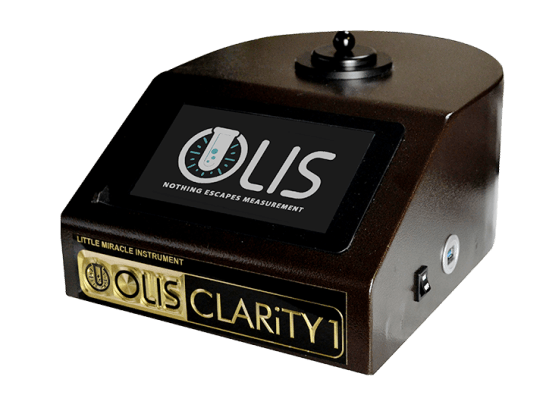Some Known Details About Uv/vis
Some Known Details About Uv/vis
Blog Article
Some Known Incorrect Statements About Circular Dichroism
Table of ContentsThe Facts About Uv/vis/nir UncoveredSome Known Details About Circularly Polarized Luminescence Not known Factual Statements About Circular Dichroism The Single Strategy To Use For SpectrophotometersAll About Spectrophotometers

Spectrophotometry is a tool that hinges on the quantitative analysis of particles depending on how much light is absorbed by colored compounds.
Get This Report about Circularly Polarized Luminescence
A spectrophotometer is typically utilized for the measurement of transmittance or reflectance of solutions, transparent or opaque solids, such as sleek glass, or gases. Many biochemicals are colored, as in, they absorb noticeable light and for that reason can be determined by colorimetric procedures, even colorless biochemicals can frequently be transformed to colored substances ideal for chromogenic color-forming reactions to yield compounds ideal for colorimetric analysis.: 65 Nevertheless, they can likewise be developed to measure the diffusivity on any of the listed light ranges that generally cover around 2002500 nm utilizing different controls and calibrations.
An example of an experiment in which spectrophotometry is utilized is the determination of the balance constant of an option. A certain chemical reaction within an option may occur in a forward and reverse direction, where reactants form products and products break down into reactants. At some point, this chain reaction will reach a point of balance called an equilibrium point.
Some Known Details About Circular Dichroism
The quantity of light that travels through the solution is a sign of the concentration of particular chemicals that do not allow light to go through. The absorption of light is due to the interaction of light with the electronic and vibrational modes of particles. Each type of particle has a specific set of energy levels related to the makeup of its chemical bonds and nuclei and thus will take in light of particular wavelengths, or energies, leading to special spectral residential or commercial properties.
They are commonly utilized in lots of markets consisting of semiconductors, laser and optical production, printing and forensic assessment, as well as in labs for the research study of chemical substances. Spectrophotometry is often used in measurements of enzyme activities, determinations of protein concentrations, decisions of enzymatic kinetic constants, and measurements of ligand binding reactions.: 65 Eventually, a spectrophotometer is able to determine, depending on the control or calibration, what compounds are present in a target and exactly how much through calculations of observed wavelengths.
Invented by Arnold O. Beckman in 1940 [], the spectrophotometer was produced with the help of his colleagues at his company National Technical Laboratories founded in 1935 which would become Beckman Instrument Business and eventually Beckman Coulter. This would come as an option to the previously produced spectrophotometers which were not able to take in the ultraviolet correctly.
What Does Spectrophotometers Do?
It would be discovered that this did not provide satisfying outcomes, therefore in Design B, there was a shift from a glass to a quartz prism which permitted much better absorbance results - circular dichroism (https://dribbble.com/olisclarity1/about). From there, Design C was born with an adjustment to the wavelength resolution which ended up having 3 units of it produced
It was produced from 1941 to 1976 where the cost for it in 1941 was US$723 (far-UV devices were a choice at extra cost). In the words of Nobel chemistry laureate Bruce Merrifield, it was "probably the most crucial instrument ever developed towards the development of bioscience." Once it ended up being terminated in 1976, Hewlett-Packard created the very first commercially readily available diode-array spectrophotometer in 1979 called the HP 8450A. It irradiates the sample with polychromatic light which the sample absorbs depending upon its residential or commercial properties. It is transmitted back by grating the photodiode range which detects the wavelength region of the spectrum. Because then, the creation and execution of spectrophotometry devices has increased profoundly and has actually ended up being one of the most ingenious instruments of our time.

The Main Principles Of Spectrophotometers
Historically, spectrophotometers utilize a monochromator including a diffraction grating to produce the analytical spectrum. The grating can either be movable or repaired. If a single detector, such as a photomultiplier tube or photodiode is utilized, the grating can be scanned step-by-step (scanning spectrophotometer) so that the detector can determine the light intensity at each wavelength (which will represent each "action").
In such systems, the grating is fixed and the intensity of each wavelength of light is measured by a different detector in the range. When making transmission measurements, the spectrophotometer quantitatively compares the portion of light that passes through a reference service and a test service, then electronically compares the intensities straight from the source of the two signals and computes the portion of transmission of the sample compared to the recommendation standard.

Report this page